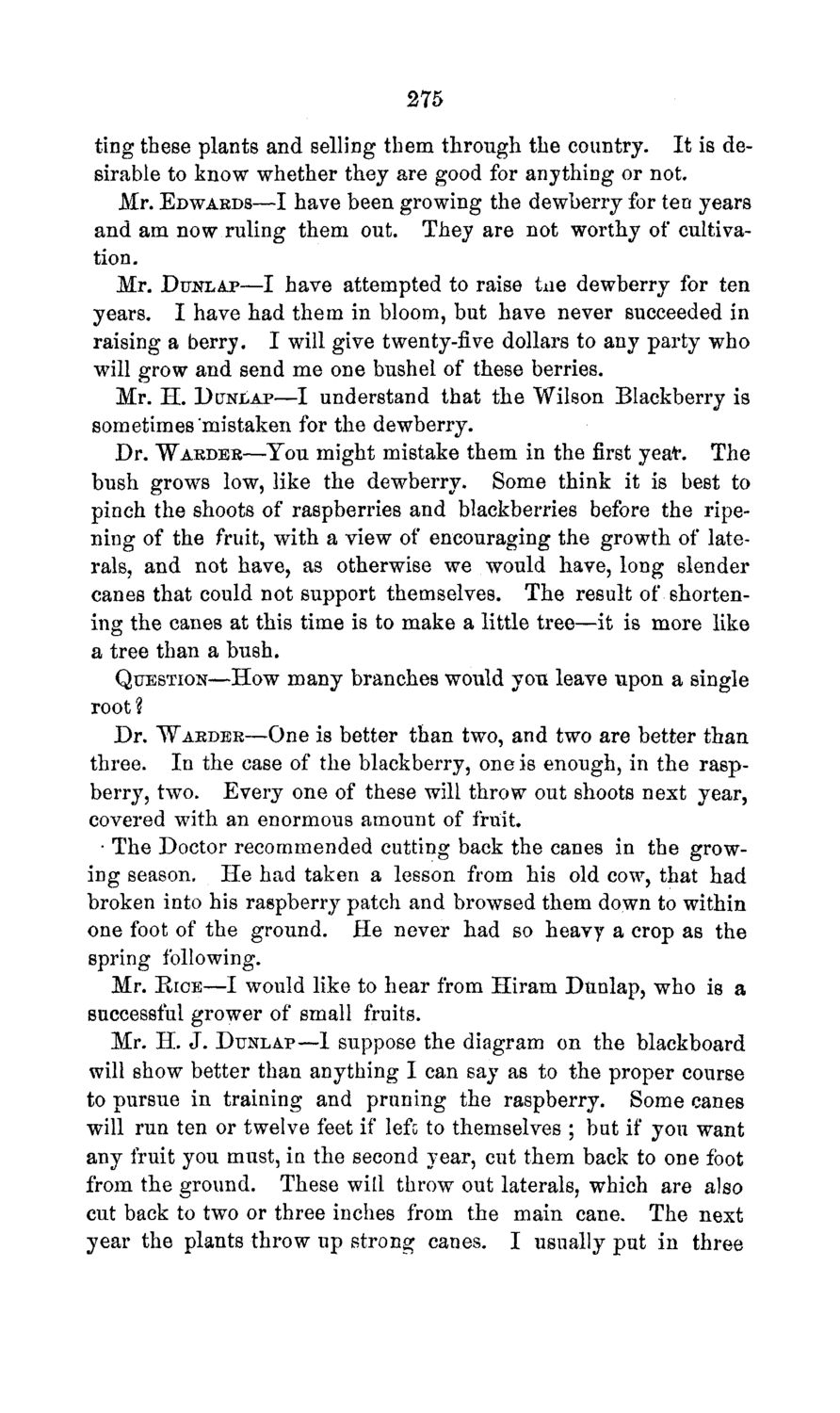| |
| |
Caption: Board of Trustees Minutes - 1869
This is a reduced-resolution page image for fast online browsing.

EXTRACTED TEXT FROM PAGE:
275 ting these plants and selling them through the country. It is desirable to know whether they are good for anything or not. Mr. EDWARDS—I have been growing the dewberry for ten years and am now ruling them out. They are not worthy of cultivation. Mr. DUNLAP—I have attempted to raise tue dewberry for ten years. I have had them in bloom, but have never succeeded in raising a berry. I will give twenty-five dollars to any party who will grow and send me one bushel of these berries. Mr. H. DCTNLAP—I understand that the Wilson Blackberry is sometimes mistaken for the dewberry. Dr. WARDER—Tou might mistake them in the first year. The bush grows low, like the dewberry. Some think it is best to pinch the shoots of raspberries and blackberries before the ripening of the fruit, with a view of encouraging the growth of laterals, and not have, as otherwise we would have, long slender canes that could not support themselves. The result of shortening the canes at this time is to make a little tree—it is more like a tree than a bush. QUESTION—How many branches would yon leave upon a single root? Dr. WARDER—One is better than two, and two are better than three. In the case of the blackberry, one is enough, in the raspberry, two. Every one of these will throw out shoots next year, covered with an enormous amount of fruit. • The Doctor recommended cutting back the canes in the growing season. He had taken a lesson from his old cow, that had broken into his raspberry patch and browsed them down to within one foot of the ground. He never had so heavy a crop as the spring following. Mr. E I C E — I would like to hear from Hiram Dtmlap, who is a successful grower of small fruits. Mr. H. J. DUNLAP—I suppose the diagram on the blackboard will show better than anything I can say as to the proper course to pursue in training and pruning the raspberry. Some canes will run ten or twelve feet if left to themselves ; but if you want any fruit you must, in the second year, cut them back to one foot from the ground. These will throw out laterals, which are also cut back to two or three inches from the main cane. The next year the plants throw up strong canes. I usually put in three
| |